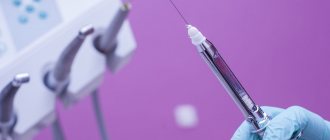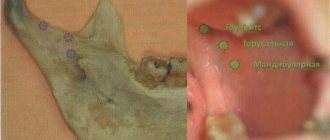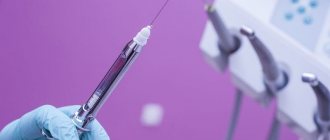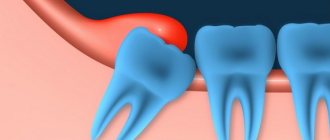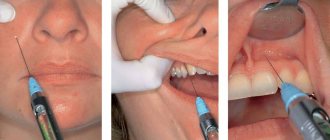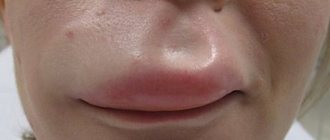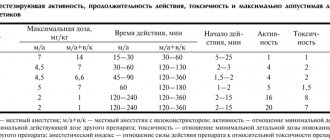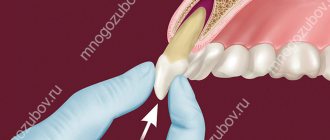605
Today, there are many methods of pain relief, the variety of which allows the use of anesthesia without direct release of drugs into the bloodstream.
At the same time, the drugs used effectively eliminate the pain impulse.
One of these methods is intrapulpal anesthesia.
Operating principle
Anesthesia under pressure, or druk-anesthesia , consists of infiltration penetration of an anesthetic drug into the dental tissue.
The mechanism of action is the tight fit of the tampon with an anesthetic to the dental tissues by installing a “plug”.
The drug gradually permeates the surrounding tissues, resulting in a fairly high stable analgesic effect.
The analgesic effect occurs within a few minutes and lasts up to half an hour, which is quite enough for therapeutic measures.
Intrapulpal injection anesthesia is the direct injection of an anesthetic into the pulp of the tooth through the resulting cavity. It also provides fast and stable pain relief results.
Description
Intrapulpal anesthesia is an additional type of anesthesia that is used in the treatment of pulpitis. The procedure involves injecting an anesthetic into the pulp area.
The manipulation is performed using a dental carpule syringe with a thin needle up to 1 cm. Such a needle makes it possible to adjust the angle of inclination. These are mandatory conditions for anatomical defects of the unit.
Most dentists prefer the injector brand IS - 01 - 1, domestically produced.
The composition of the drug is lidocaine 2% and derivatives.
For dental canals with low traffic, needle-free injectors are used.
Before the procedure, auxiliary blockade with histamines or analgesics is mandatory. The blockade is carried out 60 minutes before the treatment procedure.
Indications for use
Anesthesia under pressure is performed in the initial stages of pulpitis, if there are carious cavities in the teeth and it is necessary to effectively eliminate pain.
In addition, intrapulpal anesthesia is used in the treatment of acute deep acute caries, open pulp horn, as well as for the formation of the cavity vault with the subsequent use of injection anesthesia techniques.
The purpose of Neokonus in dentistry, the composition and properties of the drug.
Visit here to learn more about how to treat a tooth infection.
At this address we suggest that you familiarize yourself with methods of restoring teeth after endodontic treatment.
Advantages and disadvantages
Intrapulpal anesthesia, like any other medical procedure, has a number of specific advantages and disadvantages.
The advantage of the method is that it is simple to perform and any specialist can handle it. In addition, the method has a quick effect and high efficiency, while at the same time having no resorption effect.
In other words, the medicinal substance used for intrapulpal anesthesia does not have a systemic effect on the body, and therefore does not cause toxic effects.
Despite these advantages, the method of intrapulpal anesthesia also has a number of disadvantages. For example, if the patient is not previously prepared psychologically (or with the help of sedatives), he may experience severe fear, which will affect his physical condition (even to the point of fainting).
In addition, until the moment of anesthesia itself, the patient experiences pain when the needle is inserted into the pulp chamber (with the injection method of anesthesia) or when the fornix is perforated (with pressure anesthesia).
In some places in the oral cavity, such an operation is completely difficult or almost impossible to perform such anesthesia due to location difficulties .
In addition, in some cases there is a possibility of injecting an anesthetic drug into the systemic circulation . This happens very rarely, but the possibility of such an action exists.
What is intrapulpal anesthesia
The success rate of intrapulpal anesthesia reaches 95%. The effectiveness is immediate - after half a minute the patient stops feeling pain, although there is discomfort in the first moments. The drug is administered in a minimal dose - up to 0.3 milliliters, there is no negative effect on the body. The method is characterized as surface (application). The pain is relieved quickly; some dentists classify the procedure as an intraosseous method, since the drug quickly penetrates into the surrounding tissues.
Tooth preparation
In order to choose the right method of anesthesia, it is necessary to carry out preliminary preparation of the tooth.
If during a visit to the doctor the patient experiences acute pain, the dentist immediately performs infiltration or conduction anesthesia to eliminate these sensations.
If at the time of the intervention the patient’s pain from inflammation has subsided, the dentist performs the following actions:
- Food debris is removed from the carious cavity.
- Using a dental bur, overhanging edges of hard tooth tissue are removed.
- The cavity with the affected area of the tooth is opened wide with the help of instruments so that the specialist has access to the localization of anesthesia.
- Using an excavator, softened dentin is removed from the bottom and side walls of the carious cavity.
- Remains of infected dentin are removed from the side walls using a sharp bur.
- The formed cavity is disinfected and dried with sterile cotton swabs and warm air.
Only after all these manipulations, based on the available data, does the dentist decide which method of anesthesia will be appropriate in a particular clinical case.
The main signs of initial pulpitis and the tactics of its treatment.
In this article we will talk about the features of treating dental cysts with depophoresis.
Read here about the effective treatment of dental phlegmon.
Pain relief under pressure
When choosing a method of anesthesia under pressure, it is necessary to follow the rules for carrying out this manipulation.
First of all, it should be taken into account that the patient needs preliminary preparation, which includes a psychological component (an explanation of the essence of the manipulations and a conversation to calm the patient) and a medicinal one (an hour before the intervention, the patient is administered analgesic drugs, antihistamines, anxiolytics and other drugs).
After preliminary preparation of the patient has been carried out, the main stages of drug anesthesia are performed:
- A sterile cotton ball soaked in an anesthetic (for example, lidocaine) is placed at the bottom of the carious cavity.
- Then the cavity is pre-clogged with a heated thermoplastic mass, material for temporary fillings or a small piece of raw rubber.
- Using a plugger-trowel, the plug with the drug is gradually and carefully moved into the cavity.
This method of pain relief helps prevent sudden attacks of pain and promotes tight clogging of the cavity.
Thanks to this, the anesthetic under pressure has an infiltrating effect inside the tooth - the drug penetrates into the dental pulp through the dentinal tubules, and after 10-15 minutes the pain impulses disappear.
The effectiveness of this method increases in cases where the carious cavity has a central location. The method is especially effective in cases where the cavity is wide open for access.
It is worth noting that in some cases it is not possible to avoid leakage of anesthetic and a decrease in the effectiveness of anesthesia. This occurs in cases where the contact surface of the tooth is destroyed as a result of manipulation.
Anesthesia in modern dentistry has long become a comfortable and completely painless procedure. After all, the doctor has everything to ensure that the patient does not feel anything except a little pressure during the appointment.
Anesthesia is divided into several types and stages. Types of local anesthesia
- Appliqué
- Infiltration
- Conductor
- Intrapulpar
- Intraligamentary
- Osteocentral
Application anesthesia
For initial targeted anesthesia, application anesthesia is used: the area around the tooth is smeared with gel on a sterile cotton swab, which gives the effect of slight numbness in the gum area in just 30 seconds, thanks to which the injection site becomes completely insensitive.
For all types of anesthesia, a carpule syringe and a carpule with an anesthetic, which has a small, hair-thin needle, are used. The anesthetic itself is administered very slowly, and sometimes even in portions, thereby not giving the patient any sensitivity other than a feeling of fullness.
Infiltration anesthesia
This anesthesia is most often performed for the treatment of teeth in the upper jaw, in the treatment of caries, tooth extraction, root canal treatment of a tooth, tooth root resection, frenuloplasty, gumplasty, implantation, sinus lift. Less often, on the lower jaw, only when necessary - during professional oral hygiene, periodontal cleaning and minor treatment of the front teeth. This type of anesthesia occurs very quickly, literally 3-5 minutes, and its effect lasts no more than 1.5 hours.
Conduction anesthesia
This anesthesia is performed only on the lower jaw, during the treatment of caries, pulpitis, and tooth extraction. It is not inserted into the area of intended treatment, but closer to the nerve responsible for this area of the jaw. With such anesthesia, half of the jaw, half of the tongue, half of the lower lip and the cheek on the side of which anesthesia was administered go numb. This type of anesthesia has a great advantage over infiltration anesthesia - during its onset, several teeth can be treated or removed at once. Such anesthesia does not occur immediately, but after 10-15 minutes, but its effect lasts up to 4 hours. During any anesthesia, the patient’s face does not change in any way, there are no asymmetric changes, these are just sensations. To make the anesthesia go away a little faster, after treatment it is recommended to drink warm tea or any other warm drink. Eating after general anesthesia is not recommended due to the high probability of injury to the cheek or lip, since they are practically insensitive.
Intrapulpal anesthesia
This type of anesthesia is performed when there is a lack of conduction or infiltration during the treatment of tooth canals. A very thin needle of 0.3 mm with a shortened bevel is used. It can be adapted (bent) to fit any cavity. In this case, anesthesia is administered directly into the pulp, where the nerve of the tooth is located.
Intraligamentary (intraligamentous) anesthesia
Intraligamentary anesthesia is administered into the periodontal ligament around the tooth. It is also added for infiltration and conduction anesthesia, if they are not enough. The duration of this anesthesia is 30-40 minutes. The anesthetic is administered very little and slowly. Typically, such anesthesia alone is not enough to treat or remove a tooth.
Osteocentral anesthesia
This anesthesia is administered directly into the bone using a special electronic device. You can numb up to 6 teeth completely painlessly with 1 injection. A huge advantage of this anesthesia is that you can forget about the fear of biting your lip - there will be no anemia. The tip of the device is controlled like a pen, which makes the procedure even more comfortable for the patient.
Modern anesthetics for local anesthesia in dentistry
Modern anesthetics are made on the basis of Articaine. It is superior to the outdated novocaine and lidocaine. Contained in anesthetics: Ubistezin, Ultracaine, Septonest. Many anesthetics also contain adrenaline and epinephrine; they help the anesthesia last longer by constricting blood vessels in the injection area.
Ultracain DS forte is most often used for conduction anesthesia.
Ultracaine DS is used for infiltration anesthesia, as well as for children, pregnant and lactating women and people with high blood pressure.
Ubestezin and Ubestezin-forte are used for conduction and infiltration anesthesia. Contains articaine and epinephrine.
Septanest - this anesthetic contains, in addition to articaine and epinephrine, adrenaline, therefore it is contraindicated in children, patients with tachycardia and anemia. But due to vasoconstriction in patients without contraindications, anesthesia with this anesthetic occurs much faster and its effect is longer.
Skandanest - this anesthetic is made on the basis of mepivacaine. It is used for conduction and infiltration anesthesia, in the treatment of caries, tooth extraction, etc. Has a fast and strong effect for up to four hours.
{jlcommentspro}
Injection blockade and its stages
Injection blockade is recommended in cases where there is already an open tooth cavity.
To carry it out, you must perform the following steps:
- Patient preparation. This point includes psychological preparation, an explanation of the essence of the procedure, as well as preventive premedication, i.e., the preliminary use of medications to facilitate the further procedure.
- Next, the doctor selects a syringe and needle and fills the syringe with a drug for local anesthesia.
- In accordance with the characteristics of the area being exposed, the syringe needle is bent with special tools.
- Non-injection pulp anesthesia.
- Inserting a needle into the fornix opening and directly into the pulp. This is followed by a slow injection of an anesthetic drug.
During the injection, you need to remember the importance of tightly adhering the needle to the walls of the canal. In particular, when administering the medicine, the dentist should feel the resistance of the solution, which indicates that the procedure was performed correctly.
Local anesthesia in dentistry: types and preparations
In therapeutic and surgical dentistry, various types and techniques of pain relief are used. These include conduction, intracanal, intraligamentous, etc. They differ in the place of application of the anesthetic and the characteristics of administration, as well as the duration of the effect.
In modern dental clinics, carpule anesthesia is used: the anesthetic is supplied in disposable carpules - cartridges in which painkillers are mixed in the required proportions. They are inserted into syringes with screw-on disposable needles. This makes it possible to ensure sterility, since the doctor does not need to open the containers - contact of the drug with air is excluded.
Conductor
Conduction anesthesia is designed to temporarily block the nerve that transmits the pain signal. This makes it possible to numb several teeth at once, since the sensitivity of a certain area of the jaw is lost. This type of anesthesia is used in cases where it is necessary to remove or treat 2-3 teeth located nearby. It is also used for operations on soft tissues. This anesthesia lasts for at least one and a half hours.
Application anesthesia
Application anesthesia is a type of non-injection anesthesia. Apply the product with your finger or a cotton swab to the selected area. Absorbing into soft tissues to a depth of 3 mm, the medicine can reduce their sensitivity for a short period of time. Most often, this method is used to make the injection painless.
There is another form of drug release - in the form of an aerosol. However, such drugs are used less frequently because there is a possibility of inhalation and the components entering the bloodstream.
Infiltration
There are two types: direct (introduction of the drug under the mucous membrane near the teeth), indirect (introduction into the surrounding tissues). In the first case, the effect is more local, in the second, a larger area is anesthetized.
Infiltration anesthesia is often used for the teeth of the upper jaw. The alveolar processes have a less dense structure, so anesthesia is effective within one hour. In most cases, this is quite enough to perform many procedures, such as treating deep caries, filling root canals, etc.
Intraligamentary
It is also called intraligamentous. This anesthesia differs in that when administering the drug, the doctor applies more pressure so that the drug can be distributed in the periodontal tissues and penetrate into the intraosseous space. This type of pain relief begins to work in less than a minute. However, its effect is short-lived: up to 30 minutes. The administration of the medicine is practically painless, and there is no numbness of the soft tissues. Intraligamentous anesthesia can be used for the extraction and preparation (grinding) of teeth.
Spongy
Also called intraosseous anesthesia, one of the most complex types. It is used when other methods demonstrate ineffectiveness or are impossible. Allows you to anesthetize the process of removing molars and perform interventions on the alveolar processes. The doctor first dissects the mucous membrane and makes a small hole in the bone tissue using a dental bur. Afterwards, a needle is inserted into it, and the anesthetic medicine is supplied to the spongy substance of the jaw. This anesthesia lasts for up to one hour.
General anesthesia in dentistry
General anesthesia in dentistry is used when long-term, serious treatment is necessary. This solution is relevant in cases that require the removal of several teeth at once, or complex interventions on the jaw. An indication for the use of anesthesia can also be a strong fear of the dentist and the upcoming manipulations. It is also advisable to resort to anesthesia if the patient cannot adequately interact with the doctor, for example, in the presence of a neuropsychiatric disease, epilepsy, etc.
An alternative to anesthesia is sedation: it can be used as a way to improve mood, relieve anxiety, and get rid of the fear of medical manipulation. The patient is conscious, but half asleep. Sedation promotes calm, psycho-emotional balance, and normal perception of the specialist’s actions. But this is not pain relief, so this method is combined with local anesthesia.
Useful tips
To ensure that the intervention on the pulp is painless, the specialist is recommended to adhere to the following tactics:
- when the anesthesia takes effect , you need to take a sterile bur No. 1 and open the tooth cavity with it at one point, best of all - in the area of the projection of the horn of the dental pulp;
- to minimize pain from vibration and temperature , it is recommended to use turbine drills with an air-water cooling system;
- in the case of using a surgical method , an additional tampon with an analgesic should be placed on the exposed horn, and after a couple of minutes intrapulpal anesthesia should be performed by inserting an injection needle into the created hole.
In addition to these recommendations, the doctor should adequately assess the current clinical situation. If there is a threat of anesthetic leakage during pressure anesthesia, then another method of anesthesia should be chosen.
Method of intrapulpal injection blockade
The use of intrapulpal injection blockade is recommended mainly when the tooth cavity is open. After the onset of the previous pulp blockade with the help of injection anesthesia of the corresponding nerve branches, further measures begin:
- insertion of an injection needle 25 mm long. and with a diameter of 0.4-0.5 mm. into the vault hole
- mandatory insertion of the needle directly into the pulp (the optimal place to stop it is the peephole, as well as the lumen of a well-passed canal); it is desirable that the needle is tightly wedged in the vault of the chamber or the main root canal
- slow injection 0.3-0.4 ml. local anesthetic (the dose depends on the volume of the pulp and varies significantly in single-rooted and multi-rooted teeth).
When introducing an anesthetic, the dentist should feel a fairly strong resistance to the solution, which indicates the correctness of the blockade technique. To overcome the pressure caused by the advancement of the anesthetic in the limited space of the tooth cavity, the doctor must sometimes perform pumping movements.
If there are indications for intraradicular anesthesia, the needle is inserted directly into the canal, where the anesthetic is injected. At the beginning of the injection there may be a short-term pain sensation.
One of the important prerequisites for effective intrapulpal injection blockade is the tight fit of the needle to the canal walls. The larger part of the coronal pulp is closed and the more tightly the needle fits into the formed lumen, the more effective the anesthesia will be (the best option is when the diameters of the needle and the hole in the pulp chamber coincide).
Possible complications and their prevention
As already noted, intrapulpal anesthesia should be performed only with sufficient access to the localization of the working space and a wide carious cavity. In addition, the possibility of anesthetic leakage should be excluded.
If this happens, the patient may develop an allergic reaction and damage to the mucosa.
If anesthesia is administered incorrectly, pulpal inflammation may occur, which leads to necrotization of the pulp. This entails removing the affected tissue or the entire pulp at once.
It is also possible to develop an allergic reaction if the patient is individually intolerant to the pain medication.
To avoid the development of complications when performing intrapulpal anesthesia, the instruments should be sterile and the patient’s medical history should be carefully collected.
Advantages of infiltration anesthesia
- This type of anesthesia is safe, as it allows the use of solutions in low concentrations.
- The effect of infiltration anesthesia is much faster than conduction anesthesia.
- The area where the anesthetic is administered loses sensation for a long period of time.
- It is possible to administer an additional dose of the drug if long-term treatment is necessary.
- The anesthetic drug is very easily eliminated from the body in a short time.
- Loss of sensation occurs not only in the nerve into which the anesthetic was injected, but also in neighboring nerves.
Dentists' opinions
Many dentists refuse to perform anesthesia in favor of injection methods. As the main arguments, they cite patient discomfort during the procedure and the risk of side effects, in particular infection.
According to skeptics, infectious agents enter the wound along with the anesthetic. However, some other experts, on the contrary, are inclined to believe that this method is highly safe with proper preparation for the procedure.
Today, dentistry has a sufficient amount of sterile materials and antibacterial drugs to prevent infection.
Technology of infiltration anesthesia behavior
- First, the area where the drug is administered is treated with an antiseptic.
- The doctor takes a comfortable position near the patient (on his right side).
- The doctor exposes the working area of the mouth by pulling back the cheek or lip. This action can be performed by hand or with a special tool.
- The specialist places the tip of the needle on the transitional fold, maintaining an inclination angle of 45° (relative to the alveolar ridge). The cut of the needle should be directed towards the jawbone.
- Next, the doctor carefully inserts the needle until it touches the bone tissue. The immersion depth can be 5-15 mm, depending on the jaw area.
- The anesthetic is smoothly injected from a syringe into the tissues of the oral cavity.
Reviews
If you want to share information about intrapulpal anesthesia from the dentist’s or patient’s perspective, leave your comment under this article so that users of our portal can form a more complete opinion about this procedure.
If you find an error, please select a piece of text and press Ctrl+Enter.
Tags: anesthesia, toothache
Did you like the article? stay tuned
No comments yet
